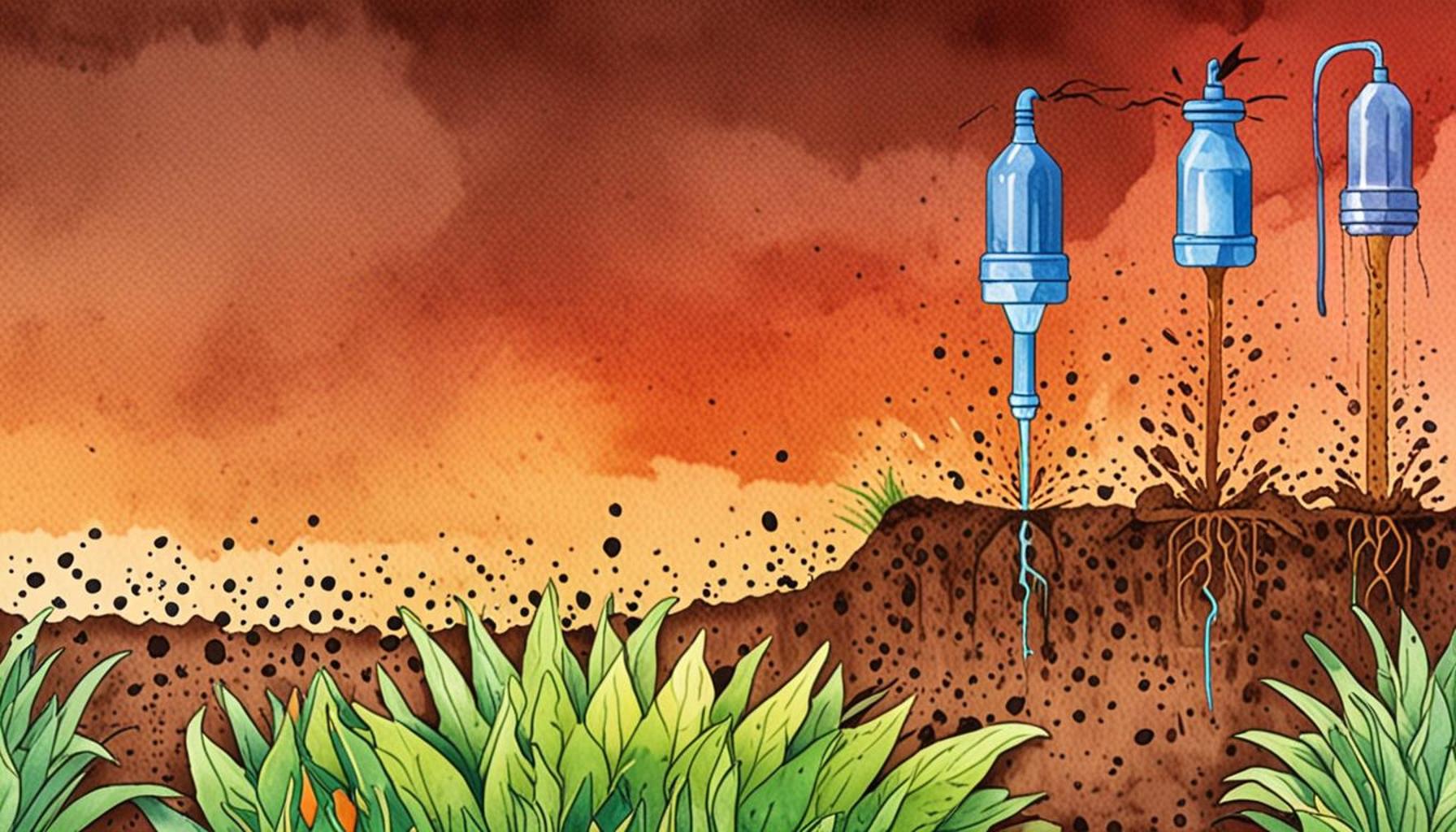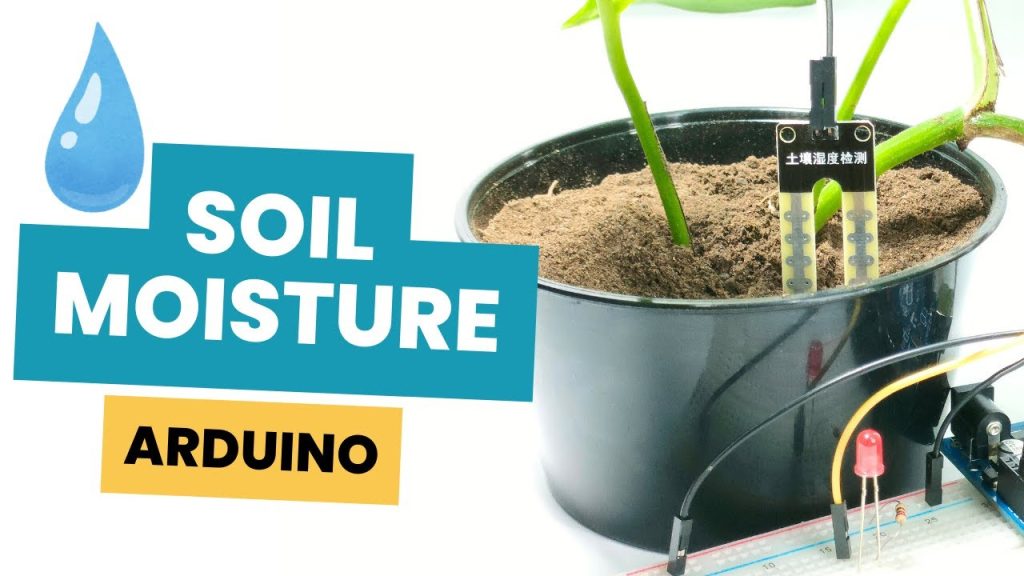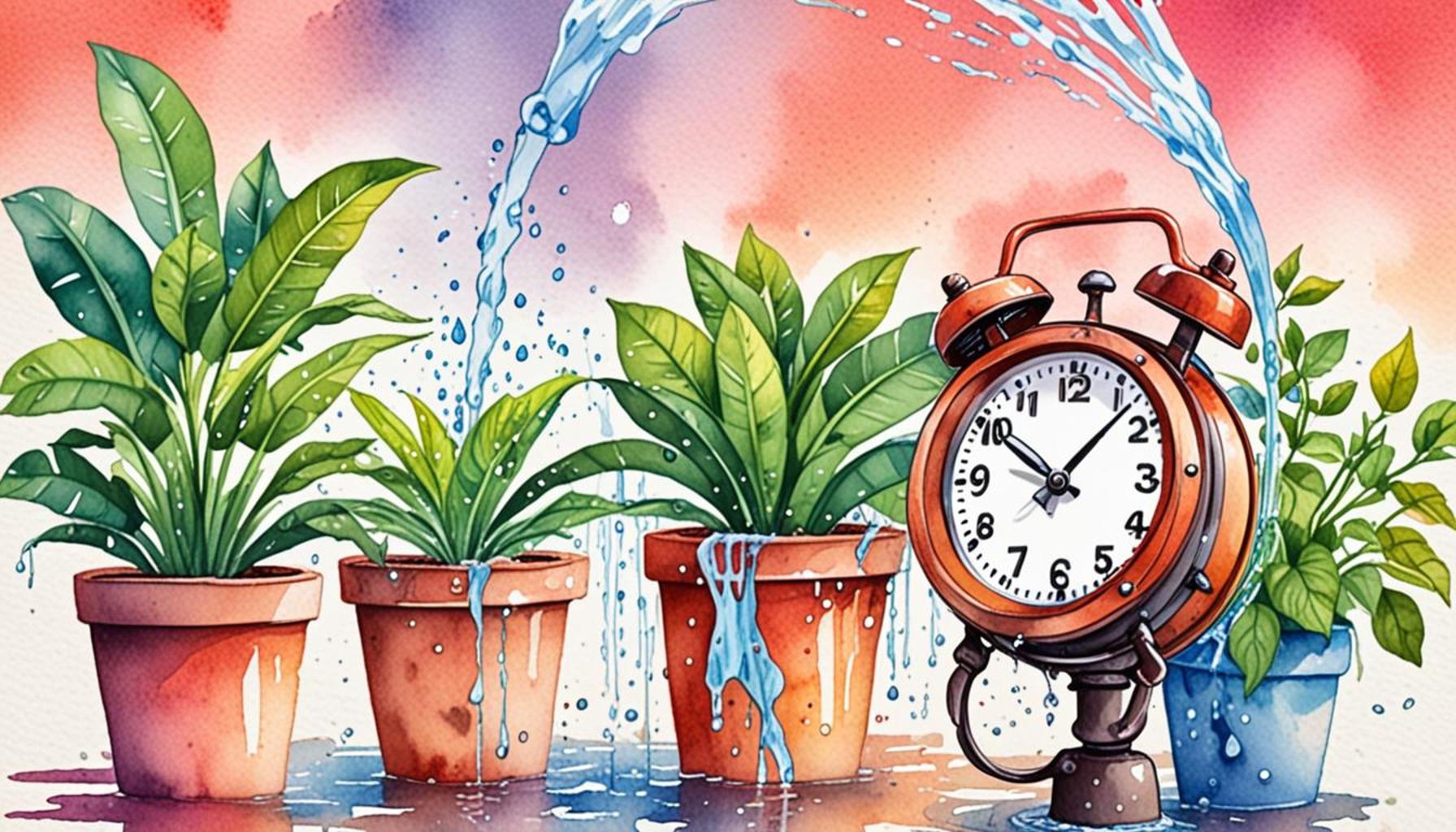The role of soil moisture: techniques for monitoring and adjusting irrigation

Understanding Soil Moisture Management
Soil moisture is fundamental to agricultural productivity, acting as a vital resource that influences plant health, growth, and ultimately, crop yields. For farmers, especially those operating in regions with unpredictable weather patterns—like the Midwest with its seasonal shifts or the arid landscapes of California—grasping the intricacies of moisture levels in soil becomes critical. Efficient irrigation systems, when complemented with effective moisture monitoring, can significantly enhance both the sustainability and productivity of agricultural practices.
In the diverse climatic landscape of the United States, where conditions range from semi-arid to humid subtropical, it is imperative that irrigation techniques are customized. Understanding the soil moisture needs based on specific geographic and climatic conditions is essential. Here are several key strategies farmers can implement to optimize soil moisture:
- Soil moisture sensors: These advanced devices provide real-time data on moisture levels in the soil, enabling farmers to make informed decisions about watering schedules. For instance, sensors can signal when moisture drops below optimal levels, ensuring timely irrigation and reducing waste.
- Drip irrigation: This highly efficient method directs water to the plant roots, minimizing evaporation and runoff. Studies show that drip irrigation can reduce water usage by 30-50% compared to traditional methods, which not only conserves resources but also keeps the soil structure intact.
- Rain gauges: By measuring rainfall accurately, these instruments help farmers determine if additional irrigation is needed after a rain event, thereby optimizing water use and ensuring crops receive the right amount of moisture.
- Moisture-retaining techniques: Practices such as mulching and cover cropping can enhance soil water retention. For example, mulching reduces surface evaporation, while cover crops prevent erosion and improve soil structure, leading to enhanced moisture retention during dry spells.
This monitoring and management approach not only supports optimal growth conditions but also plays a crucial role in conserving water, thereby reducing irrigation costs. With the looming challenges of climate change and increased competition for water resources, effective soil moisture management has never been more critical.
Moreover, the science surrounding soil moisture and irrigation is ripe for innovation. Farmers are increasingly exploring new technologies such as automated irrigation systems and soil moisture zones to optimize their practices further. By harnessing data-driven solutions, producers can enhance productivity while making conscientious environmental choices. This article will explore cutting-edge trends and techniques that can revolutionize the agricultural landscape, encouraging farmers to rethink their approach to soil moisture management and irrigation practices.

As agricultural demands grow and our climate changes, the need for effective soil moisture management strategies becomes increasingly vital. Continued education and adaptation in this area can lead to improved sustainability and resilience within the farming community.
DISCOVER MORE: Click here to learn about water-saving techniques
Key Techniques for Effective Soil Moisture Management
To properly manage soil moisture, it’s essential for farmers to adopt a mix of traditional and modern monitoring techniques. By implementing these methods, they can maintain optimal moisture levels, which are crucial for crop success. Below are some effective techniques for monitoring and adjusting irrigation:
- Tensiometers: These devices measure soil tension, providing insights into the moisture availability to plants. By indicating how hard plants need to work to pull water from the soil, tensiometers empower farmers to irrigate only when necessary, preventing overwatering and promoting healthy root development.
- Capacitance sensors: Utilizing advanced technology, capacitance sensors measure the dielectric constant of the soil, directly correlating it with moisture content. This allows farmers to obtain an accurate reading of soil moisture at various depths, enabling better planning and risk management.
- Soil moisture mapping: Geographic Information Systems (GIS) can be employed to create soil moisture maps across large fields. By analyzing patterns in moisture distribution, farmers can identify zones requiring targeted irrigation, ensuring a more efficient use of water resources.
- Evapotranspiration (ET) calculations: Understanding how much water is lost due to evaporation and plant transpiration is crucial in fine-tuning irrigation schedules. Using local weather stations and historical data, farmers can determine ET rates, allowing them to adjust their irrigation accordingly.
In addition to the technologies mentioned, integrating these methods with a comprehensive irrigation plan can further enhance soil moisture management. Considerations on timing, frequency, and quantity of water applied are essential, as varying crops may have unique water demands. For example, deep-rooted crops like alfalfa may require different moisture management strategies compared to shallow-rooted crops like lettuce. The key is to tailor the approach based upon individual crop requirements and the local environmental context.
Furthermore, utilizing data analytics in combination with soil moisture sensors can create predictive models to inform irrigation practices. Such models can anticipate moisture needs based on weather forecasts, reducing both water usage and operational costs. Farmers who adapt these data-driven technologies often find not only economic benefits but also a stance in sustainable practices that contribute to environmental conservation.
As water becomes a more precious commodity amid climate challenges, actively measuring and adjusting irrigation based on soil moisture data is no longer a luxury but a necessity. Consequently, investment in monitoring technology not only supports higher crop yields but also aligns with broader goals of sustainability and resilience in agriculture. Through education and innovation, the agricultural community can cultivate a more precise relationship with soil moisture management, paving the way for a more sustainable future.
The Role of Soil Moisture: Techniques for Monitoring and Adjusting Irrigation
Soil moisture content is a crucial factor in agricultural productivity, influencing crop yields, water conservation, and overall soil health. Understanding moisture levels allows farmers to make informed decisions regarding irrigation, thereby maximizing efficiency and minimizing waste. Various techniques for monitoring soil moisture have emerged, each presenting unique advantages and challenges.
| Monitoring Techniques | Key Features |
|---|---|
| Tensiometers | Utilize water tension to provide real-time moisture levels, ensuring precise irrigation schedules. |
| Soil Moisture Sensors | Provide accurate readings via electrical resistance or capacitance, helping to automate irrigation systems based on needs. |
| Gravimetric Method | Offers a laboratory analysis of soil samples, delivering in-depth moisture content information. |
Implementing these monitoring techniques not only aids in optimal water usage but also promotes sustainability within agricultural practices. The role of technology in soil moisture management is evolving, paving the way for smarter irrigation practices that reflect the dynamic nature of farming. As climate variability continues to challenge traditional methods, embracing innovative techniques will be vital in adapting to the needs of the industry.
As farmers delve deeper into the effects of precise moisture measurements, adjusting irrigation methodologies accordingly can lead to enhanced crop resilience and soil quality. Each technique serves as a stepping stone towards more adaptive and sustainable farming systems, ensuring that water remains a valuable resource rather than a limiting factor in agricultural production.
DIVE DEEPER: Click here to learn about the advantages of mulching
Innovative Approaches to Enhance Soil Moisture Management
As the agricultural sector faces the dual challenges of an increasing global population and shifting climatic conditions, incorporating innovative approaches for soil moisture management is paramount. Beyond traditional monitoring techniques, several emerging technologies and practices hold promise in optimizing irrigation strategies and sustaining crop health.
Smart irrigation systems are at the forefront of these advancements. By integrating sensors with automated irrigation controls, farmers are empowered to fine-tune their watering schedules. These systems collect real-time soil moisture data, allowing for accurate adjustments based on varying factors such as weather patterns and specific crop needs. The result is a significant reduction in water usage while maintaining the health and yield of crops. For instance, according to the USDA, smart irrigation can often reduce water consumption by up to 30%, showcasing its potential as a vital resource-saving technology.
Furthermore, the rise of drone technology introduces another level of precision in soil moisture monitoring. Equipped with infrared cameras, drones can assess soil conditions over expansive areas quickly. This aerial imagery provides insights into moisture variances across fields, enabling targeted irrigation applications in regions that require it the most. As reported by the American Society of Agronomy, the utilization of drones can cut labor costs and save time, all while delivering precise agricultural data that enhance irrigation efficiency.
Another noteworthy trend is the advent of soil moisture retention amendments, such as hydrogels and organic matter-based mulches. These materials assist in improving soil structure and water retention capacity, allowing soils to hold moisture for extended periods. Their application can be particularly beneficial in drought-prone regions of the United States, such as California, where managing scarce water resources is crucial for sustainable farming.
Climate-smart agricultural practices also play an essential role in regulating soil moisture levels. Techniques such as cover cropping and no-till farming contribute significantly to moisture retention in the soil, minimizing evaporation and reducing the need for frequent irrigation. Cover crops, such as legumes or grasses, not only protect the soil from erosion but also improve its organic matter content, fostering a healthier soil structure conducive to water absorption. Studies suggest that fields employing no-till methods can retain 10 to 20% more soil moisture compared to conventional tillage, enhancing resiliency against dry spells.
Lastly, the importance of educating farmers about sustainable irrigation practices cannot be overstated. Workshops and educational programs that emphasize the correlation between soil moisture content and sustainable agricultural practices can prompt a greater understanding of water conservation strategies. As more farmers become proficient in monitoring and managing irrigation based on moisture levels, the entire agricultural sector can transition toward a more sustainable future, yielding both economic and environmental benefits.
In summary, the exploration of new technologies and practices in managing soil moisture represents an exciting frontier in agricultural innovation. By leveraging smart tools, embracing organic solutions, and fostering a knowledgeable farming community, soil moisture management will become increasingly efficient—ultimately securing food production while safeguarding vital water resources.
DIVE DEEPER: Click here to discover why soil testing is essential
Conclusion: Securing a Sustainable Future through Soil Moisture Management
In conclusion, the role of soil moisture is integral to agricultural success, influencing both crop health and water conservation practices. As the demand for efficient food production intensifies alongside the challenges posed by climate change, embracing advanced techniques for monitoring and adjusting irrigation will be crucial for farmers across the United States. By leveraging innovative technologies, such as smart irrigation systems and drones, growers can gain unparalleled insights into their soil conditions and optimize their resources accordingly. This proactive approach not only conserves water but also enhances crop yields and sustainability.
Furthermore, the incorporation of soil moisture retention amendments, climate-smart practices like no-till farming and cover cropping, and educational initiatives aimed at empowering the farming community collectively contribute to a resilient agricultural landscape. These methods help in ensuring that farming practices adapt to changing environmental conditions while maintaining the essential balance of moisture in the soil.
As the agricultural sector continues to evolve, it is imperative to foster a culture of innovation and continuous learning among farmers. By prioritizing soil moisture management techniques, we can not only secure food supplies for a growing population but also protect our precious water resources for future generations. Now is the time for agricultural stakeholders to invest in sustainable practices that harmonize crop health with environmental stewardship, ensuring a fruitful and ecologically sound future.


